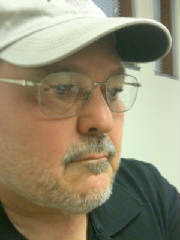The loudspeaker over the classroom door crackled to life. But it was Walter Cronkite’s
voice not the school secretary’s that we heard in last-period study hall. Puzzled looks flitted across the room but
only for an instant as Cronkite made the choked announcement that President John F. Kennedy had been shot in Dallas and was
dead.
As 17- and 18-year-olds we really didn’t know what to make of this news. We knew that something
horrific had happened. But at our young age I don’t think we fully understood its order of magnitude. Some of us perhaps
began to suspect when we got home and saw our parents shedding tears.
Our parents lived with the remembrance of the news of December 7, 1941, when the Japanese
launched a surprise attack on Pearl Harbor. Where were you and what were were you doing when you heard? Now, for
us, our answer evermore was that we were seniors in a high school study hall on that shocking Friday afternoon when JFK was
assassinated.
We were Fifties-cultured kids entering the Sixties and had only a civics class understanding of public
affairs up to that point. We had little experience confronting life’s unpleasant realities — the only intrusion
being the Cuban Missile Crisis a year before when our school was ringed with buses for quick evacuation in case someone pushed
the button.
If nothing else, November
22 and the uncertain explanations tendered in the aftermath opened the door to the age of conspiracy, and fifty years later
it is still upon us. How could lone gunman Lee Harvey Oswald have managed to kill JFK? How did Jack Ruby manage to kill
Oswald and why? Questions led to more questions and never any verifiable answers.
In the years
following the assassination the public’s distrust and suspicion grew deeper with the Vietnam War and the Pentagon Papers,
Watergate and Richard Nixon’s resignation, a disputed national presidential election, and, of course, 9/11.
We are now susceptible to believing that someone always
lurks behind the scenes plotting, pulling the strings, rigging the outcome. Nothing happens organically but rather is made
to happen in a certain way for somebody’s purpose. This has become the legacy of the JFK assassination.
In
a sense, we now live near the edge of a curtain of shadows. On one side, in the daylight, is the knowable; on the other side,
in the dark shadows, we fear there exist deliberate and evil machinations.
Decades after November 22, 1963—in the mid-1990s—I was in Dallas on a freelance
assignment as a writer for a corporate think tank. I was with a group having dinner downtown, and afterward I took a walk
to finally see Dealey Plaza for myself.
It was well after dark. There was a gentle breeze, just enough
to skitter the scraps of paper lying along the sidewalk. The plaza was smaller than I expected. Given the momentous event
that occurred there I guess I had assumed it was a larger space.
From where I stood on the sidewalk, the School Book Depository was behind me over my right shoulder.
The Grassy Knoll was off to my right, the highway underpass in front of me. I was virtually next to the spot on Elm Street
where JFK’s limo had been when he was hit.
I turned and looked up at the window from which Oswald was said
to have fired. Was it possible? Was the official version feasible? Was there more to it?
One of my dinner companions, an employee of the corporation that had
hired me, had walked along with me. He was a former CIA operative and, as we walked, he told me a story about helping to locate
a spy by triangulating his microburst transmissions.
Almost involuntarily I looked up into the dark sky. It was a
black, starless umbrella over the place where evil had once laid its hand. My companion had nothing more to add to his story,
but my imagination took up where he left off.
Yes, I thought, there are more things than we know in the dark, behind the curtain of shadows.
© Editorial Enterprises, Inc., and Donald
C. Sarvey


